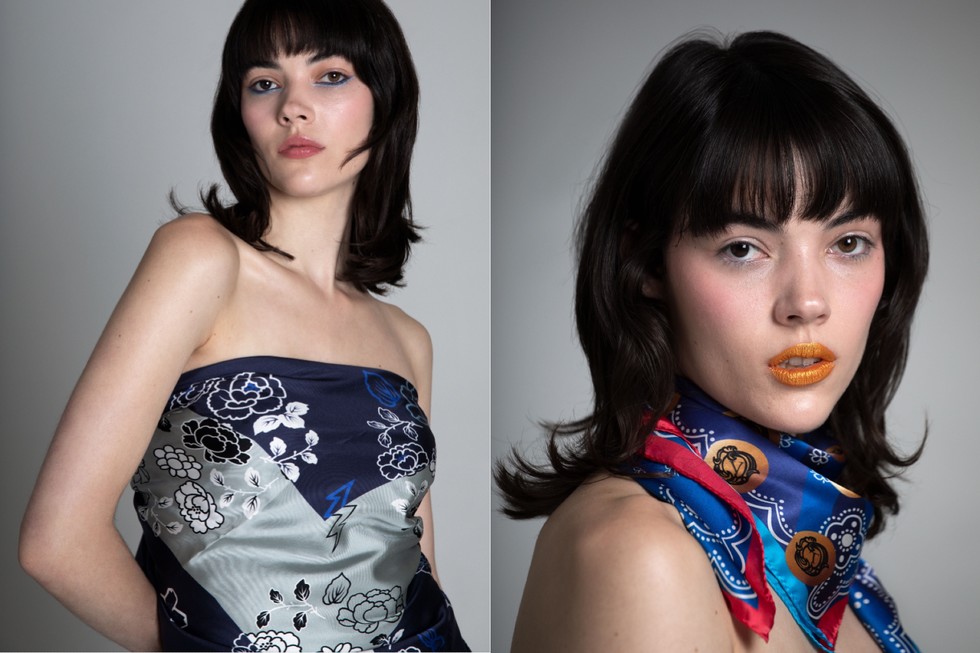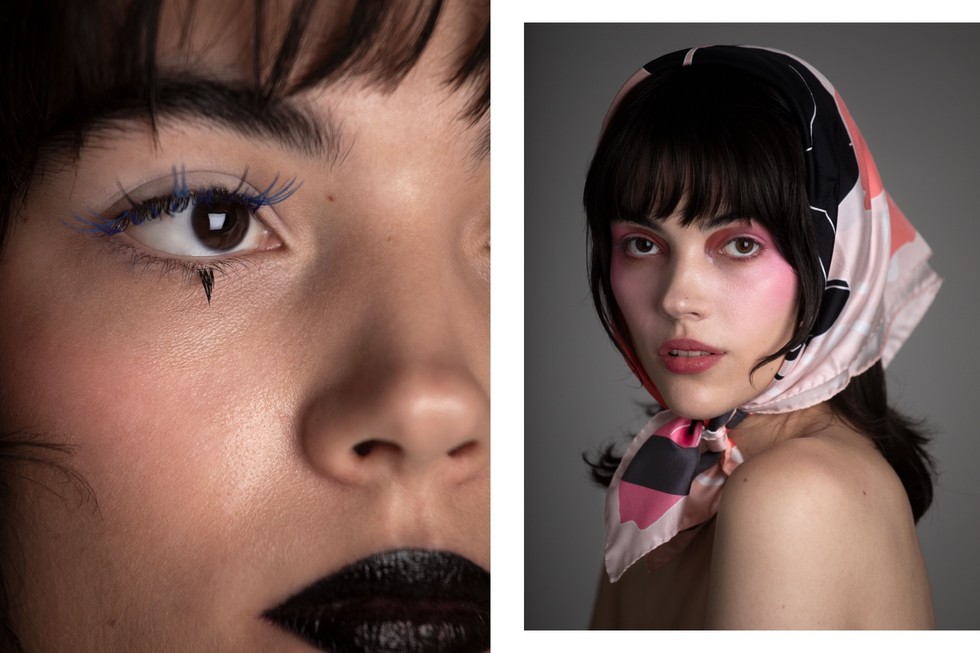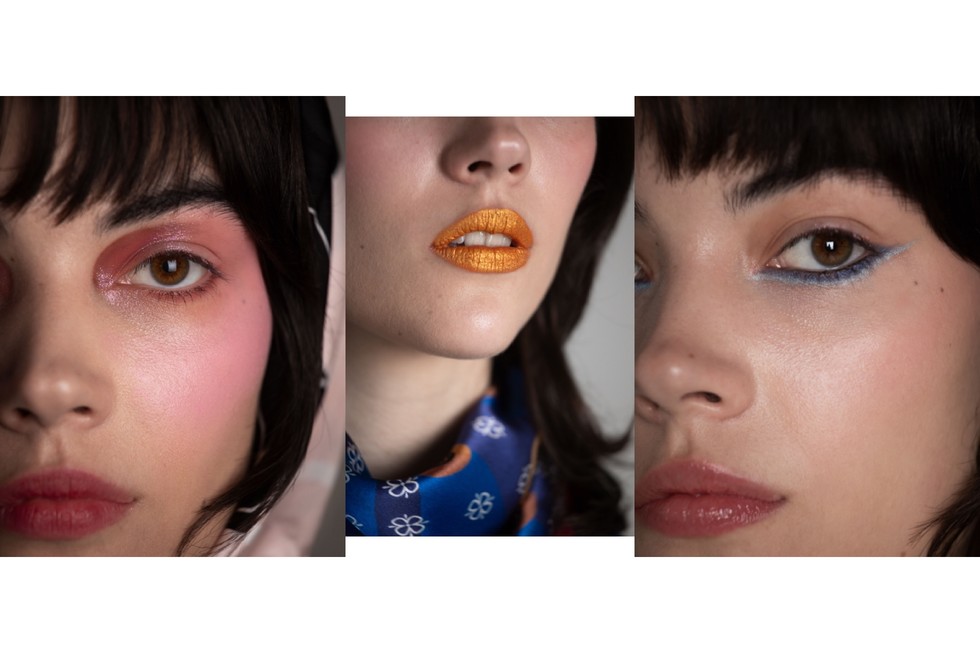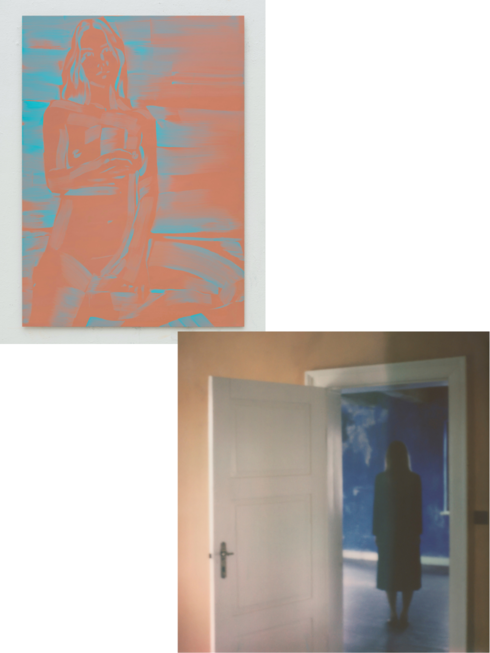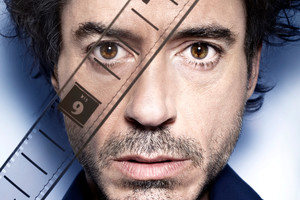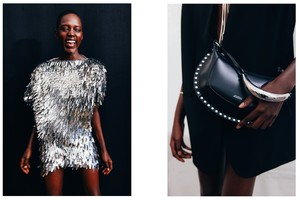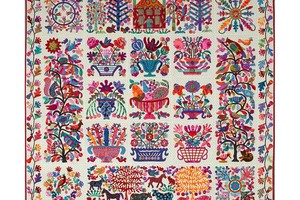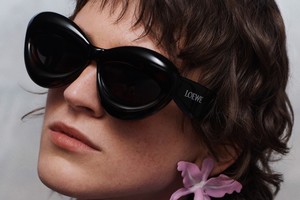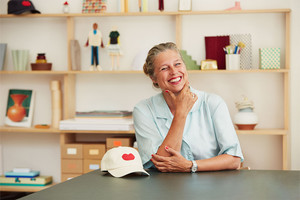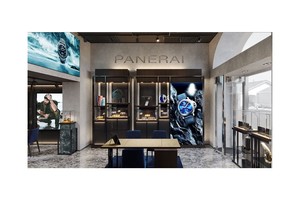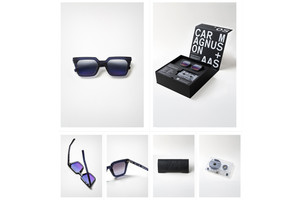“The Silk Vault” Unveiled: Anna Möller's Artistic Odyssey in Crafting Timeless Silk Scarves and Embracing Ethical Fashion
Written by Alicia Hurst by Filippa FinnAnna Möller, the creative force behind The Silk Vault, graciously provides insights into the enchanting world of her unique scarf designs. With a background in fashion design, garment pattern making, and a wealth of cultural experiences from London, New York, and now Stockholm, Anna's journey shapes the brand's identity and design language. The Silk Vault's commitment to sustainability and ethical practices stands out in an industry dominated by fast fashion, emphasising the creation of timeless, limited-edition pieces. In this interview, Anna delves into her creative process, inspirations drawn from architecture, arts, travel, music, and subcultures, and the brand's philosophy of exclusivity. Join us on a captivating exploration of the artistic journey that culminates in each meticulously crafted silk accessory, embodying a fusion of Anna's diverse influences and a fervent dedication to enduring beauty in fashion.
Can you share more about the creative process behind your unique scarf designs, and how you draw inspiration from architecture, arts, travel, music, and subcultures?
Each of my scarf patterns start from an initial idea of inspiration. That idea is then researched and sketched up – by hand or digitally. Once the motif is sketched up, I add colour and play around with it, exploring the best and strongest layout.
Incorporating a beautiful border design is an important part of the overall impression. I love designing the scarves with different patterns or colours in each corner. The idea is that the bearer can vary the expression of the scarf, depending on how it is knotted and draped on the body. I consider each and every detail of the design and aim to make each scarf a sustainable and lovable accessory to wear often and for years to come.
I draw inspiration from everywhere and anywhere, high and low. A vast source for new ideas comes from visiting new places; exploring architecture, local craft, and nature.
During a weekend trip to Florence, Italy, I visited the cathedral and noticed an unusual clock on the wall that took my breath away. I instantly realised it had to be turned into a scarf motif and got on my knees on the cathedral floor to photograph the marble tiles, which had stunning green and salmon pink tints. The tiles turned into patterns around the clock motif of the scarf, which got the name Firenze.
I’ve had the opportunity to travel in Japan a couple of times, and their art and design is an endless source of inspiration to me. The Silk Vault signature silk tunics are inspired by the simplicity of the kimono cut, then decorated with prints. My scarf designs often have a nod to Japanese design too.
The hand-painted scarf Orchid came about after stumbling across an international orchid exhibition in Okinawa, Japan.
Whilst on a factory work trip to Hangzhou, China, I managed to sneak away for a few hours to visit the local silk market, where I spotted beautifully hand-painted silk pieces with the specific style of the region. I fell in love with the technique and decided to explore it for The Silk Vault’s collection. During the same afternoon I got on a dragon boat and watched the sunset over The West Lake and the surrounding mountains. I had a few magical hours that afternoon that led to multiple design ideas. The dragon boat can be spotted on the new scarf Jubilee, from the latest collection.
A person in my life that has meant the most to me creatively is my aunt, the late artist Ingegerd Möller. She taught me about composition, colours and how the eyes should travel in an artwork. She gave me lots of art books which was the start of my art book collection. I frequently refer to my favourite artbooks, and one of them is about Diaghilev and his Ballet Russes.
I love listening to music when I work. A great way for me exploring new music is through the BBC 6 Music app. Independent dj’s have their regular shows, without restricted, commercial playlists. Two of my favourite dj’s there are Iggy Pop and Huey Morgan who both play eclectic music mixes where I have discovered lots of great new and old music.
I met my fiancée through music. He is a dj and is part of a music movement, Funk Freaks, a dj collective based out of Santa Ana. The Street Funk movement is originally part of the Orange County Chicanx culture, but it has spread worldwide and they have a following in Europe and Asia too. I met so many inspirational people through music, and I think fashion and music really go hand in hand. My favourite (Modern) Funk artist and singer, Moniquea, has become one of my muses when I design.
The Silk Vault's emphasis on limited editions and exclusivity is intriguing. Could you explain the reasoning behind this approach and how it aligns with your brand's philosophy?
Ten years ago, I was working in London as a design director for a company designing and producing collections for retailers in the UK and France. We focused mainly on nightwear and lingerie with a crafted handwriting and beautiful encrusted lace placements. When I first joined the company we used beautiful silk fabrics, prints and French laces, but over the years and following the world economy, the products became more simplified. Silk got replaced with polyester, French laces with cheaper copies, and chasing low prices and high volumes became the focus.
I fell out of love with my work in fashion, which had started from a love of arts, beautiful textiles and craftsmanship. I had never chosen to work with fast fashion, but this is what my job turned into. I felt frustrated and wanted to leave the fashion industry but was realistic enough to realise I couldn’t afford to leave work as it is very expensive living in London.
I felt a huge urge to get my creative outlet into designing something that was not commercially led by price or the predicted colour of the season. I wanted to create something beautiful that would be allowed time to develop, would last and be desirable enough to keep. The opposite to fast fashion.
I always loved working with silk, and as I had visited many silk factories and mills in the Far East silk districts on my work trips, I was familiar with the printing and manufacturing process.
As a teenager I inherited a chest of scarves from a well-travelled neighbour, which was the start of my scarf collecting. When I started travelling in the Far East with work, I was often away for two weeks at a time. In the evenings there was time to kill, purchasing silk scarves from markets and hotel shops became a hobby. Thanks to the scarf collecting, I started analysing coloration and thinking of design improvements of the scarves I had bought. The border could always be slightly more interesting, or there should have been a different shade in that corner, and so on.
I decided to start my own silk scarf brand on the side of my employment, and in complete secrecy, just in case it wouldn’t be popular with my bosses. I choose the name The Silk Vault, as you store your most precious belongings in a vault. This was my own precious project.
All scarves are made in exclusive, limited-edition pieces, because it is more special buying a scarf that was only made in say, ten or twenty pieces, rather than mass-produced. My customers love the fact that they buy something that is unique and can’t be seen everywhere. For me, selling thousands of scarves is not important.
Anna Möller's personal connection to silk scarves is fascinating. How has her background in fashion design and garment pattern making influenced the brand's aesthetic and design choices?
Ever since being a child I have enjoyed drawing, sewing and creating. I studied textiles and tailoring in high-school, pattern-making at Tillskärarakademien in Stockholm and have a BA Fashion Design degree from University of Westminster, London.
I have worked in various disciplines within the fashion industry; as a designer, sample seamstress, production and pattern making. I love all parts of the creative process and love how a collection comes together when everything works together.
For me print design, fashion design, pattern making and proportions all go hand in hand. Apart from The Silk Vault, I work as a pattern maker & technical designer for a Swedish brand. I love my work there, for me all work is connected and generates ideas.
When I design prints for The Silk Vault I create a story in my mind where I see the motifs as part of a story. I envision the styling, the models and the music they listen to, the venue and the styling.
When shooting a collection, it is important to me to communicate an overall feeling. It’s not just about the scarf prints. I love styling and spend a lot of time making styling garments to get exactly the look and fit I want. Sometimes I print fabric up just to make styling garments. Then I create the patterns and sew the garments myself. It is a lot of work, but it's so satisfying when you manage visualising and communicating your idea.
I have been lucky enough working with an amazing photographer all these years, London- based Johanna Nyholm. She has a fantastic way of capturing the models, and it is through her lens my designs come to life.
With your founder's experiences in London, New York, and now Stockholm, how have these diverse cultural influences shaped The Silk Vault's identity and design language?
I lived in London for eighteen years, which has influenced my life vastly. London is a cultural mishmash and a strangely functioning and beautiful chaos. Living there you meet so many wonderful people, you get exposed to weird situations and experience life in highs and lows. It is a melting pot of hard-working people and there is so much happening on the cultural scene. In East London where I lived the last few years, there were new shops, galleries and restaurants opening every week.
I was located in New York for a few months for a job, which was a wonderful experience too. As in London, I love the contrasts of highbrow and lowbrow within the culture scene, different neighbourhoods, bars and shops. What I also love about New York is the high energy and buzz.
When working abroad, I always felt quite connected with my Swedish roots and heritage in terms of my creative hand-writing. However, since moving back to Sweden this has changed and I don’t see The Silk Vault as a typical Swedish brand. The style is a combination of all my experiences and influences, and some kind of minimal maximalism and luxury meets street.
Sustainability and ethical practices are important topics in the fashion industry today. How does The Silk Vault approach sustainability in the production of its silk accessories?
All The Silk Vault’s products are designed in Stockholm and carefully developed together with specialist printers and manufacturers. Each design is attentively considered and is only released when it is perfect.
The Silk Vault’s aim is to design original products that are durable and beautiful enough to wear your whole life and then be handed down to a relative or friend. Each piece should stand the test of time. The products are always made in exclusive, limited-edition quantities.
The Silk Vault’s products are kept in the web-shop as long as they are available in stock, and we think the design is relevant and beautiful. They do not get taken down from the shop just because they are from the last season. A good design is timeless.
No products are ever thrown away. Any left-over products are either gifted or used as fabric to re-make new garments or for example used as linings. We only use the highest quality fabrics and materials that look and feel special. This adds to a long life span of the product.
We want our products to have the highest possible quality. Therefore, we only work with leading experts with niche skills and experience in silk manufacturing and printing.
The Silk Vault’s main products are made in Lake Como, Italy and in the traditional silk districts of Suzhou, Hangzhou and Guangzhou, China. Other products, such as t-shirts and truckers are printed and embroidered locally in Sweden, whenever possible.
We believe in collaborating with partners with fairness and in a respectful manner. All collections are made in small-scale production, and we work with manufacturers compliant with BCSI and SEDEX certificates.
We avoid using plastic and use recycled or recyclable paper packaging wherever possible. Scarves are delivered wrapped in tissue paper inside a hand-made cardboard box, created from recycled and compostable paper in Cornwall, England.
Silk is one of the strongest natural fibres, and if you care for your silk pieces they will last for many years to come and over generations.
We encourage our customers to air their scarves or clothing instead of washing them too often. On our website we have a page for how to look after silk scarves in the best way.
Can you tell us about any upcoming collections or collaborations that The Silk Vault is currently working on or planning for the future?
Right now, we are planning a pop-up event at Mosebacke, Stockholm, at the beginning of December. As we currently only sell online, it's nice to showcase the collection in real life to show the beautiful materials. It's how the collections really should be seen.
We have been invited to exhibit at a design show in Malmö 2024, which should be really exciting.
We have just started talking about doing a digital collaboration together with a tv-collector and digital creator, which would be something new and fun.
We are also starting to design a new upcoming collection of scarves and accessories.
In a world where fast fashion dominates, what message or values do you hope customers take away from The Silk Vault's commitment to creating timeless, limited-edition pieces?
My wish is that people stop overconsumption of fashion and buy less items with higher quality that will last longer. Think about what you feel good wearing and build your own unique style around that, rather than buying into seasonal trends and throw-aways. Accessorising with silk scarves is a fun and great way of adding colour and luxe to even a basic wardrobe. And you can share them with your partner, flatmate and family for variation.


